The 60th Air Defense Artillery Regiment is an air defense unit of the United States Army.
The 198th Signal Battalion is an Expeditionary Signal Battalion in the Delaware Army National Guard. Delaware is known as the "First State," as referenced in their motto "First Regiment of First State." The unit specializes in command post node communications, providing broadband satellite voice and data connections for brigade sized battlefield elements. The unit includes Headquarters, Headquarters Company located in Wilmington, DE; A Company in Georgetown, DE; B Company in Hodges, SC; and C Company in Wilmington, DE. It is one of several National Guard units with colonial roots and campaign credit for the War of 1812.
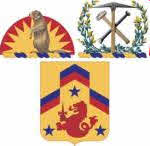
The 82nd Cavalry Regiment is a parent regiment in the United States Army National Guard. It is represented in the Oregon Army National Guard by the 1st Squadron, 82nd Cavalry, part of the 81st Stryker Brigade Combat Team.

The 48th Infantry Regiment is an infantry regiment in the United States Army first formed in 1917.
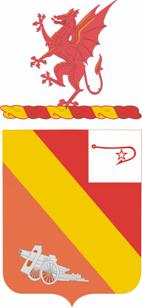
The 13th Field Artillery Regiment is a field artillery regiment of the United States Army first formed in 1916.

The 21st Field Artillery Regiment is a field artillery regiment of the United States Army first formed in 1916. A parent regiment under the U.S. Army Regimental System, all components of the regiment are currently inactive. The 1st Battalion 21st Field Artillery Regiment, the regiment's final active component, deactivated on June 12, 2014.

The 28th Field Artillery Regiment is a field artillery regiment of the United States Army, first constituted in 1918 in the National Army (USA).
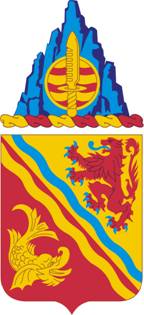
The 37th Field Artillery Regiment is a field artillery regiment of the United States Army, and parent regiment under the U.S. Army Regimental System. The regiment was first constituted 5 July 1918 in the National Army. The regiment served with the 10th Division during World War I, and the 2nd Infantry Division during World War II. Elements of the regiment have served with the 2nd Infantry Division, 6th Infantry Division, 79th Infantry Division, and 172nd Infantry Brigade, among other units. Two battalions of the regiment are currently active, the 1st Battalion, 37th Field Artillery is the 155mm towed cannon battalion assigned to the 1st Stryker Brigade Combat Team, 2nd Infantry Division and the 6th Battalion, 37th Field Artillery is a Multiple Launch Rocket System battalion in the 210th Field Artillery Brigade.

The 36th Field Artillery Regiment is a field artillery regiment of the United States Army.

The 300th Field Artillery Regiment is a Field Artillery regiment of the United States Army.

The 6th Air Defense Artillery Regiment is an air defense artillery regiment in the United States Army, first formed in 1898 as the 6th Regiment of Artillery. The 6th and 7th U.S. Artillery Regiments were constituted on 8 March 1898, three weeks after the explosion of the USS Maine in Havana, Cuba on 15 February 1898, as the United States' declaration of war on Spain and commencement of the Spanish–American War seemed imminent.

The 146th Field Artillery Regiment is a field artillery regiment of the Army National Guard first Constituted in 1886 as the 1st, and 2nd Regiments of Infantry.
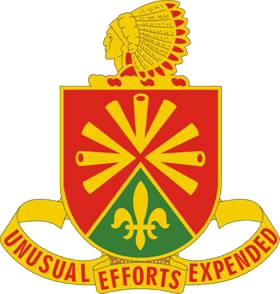
The 158th Field Artillery Regiment is a Field Artillery regiment of the Army National Guard.
The 126th Field Artillery Regiment was a regiment in the United States Army National Guard.
The 212th Coast Artillery was a Coast Artillery regiment in the New York National Guard.
The 213th Air Defense Artillery is a regiment in the Pennsylvania Army National Guard.

The 276th Engineer Battalion is an engineer battalion of the Virginia Army National Guard. Headquartered in Petersburg, Virginia, it is one of several Army National Guard units with campaign credit for the War of 1812.
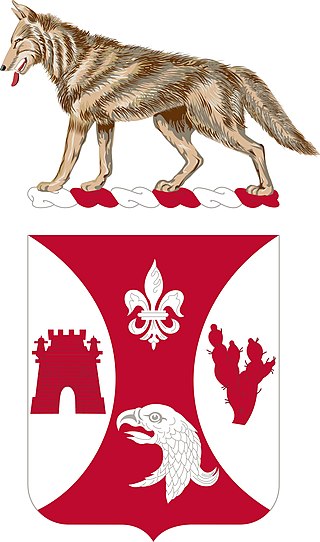
The 196th Infantry Regiment is an infantry regiment of the United States Army National Guard. It traces its lineage to units which have been both infantry and engineers.
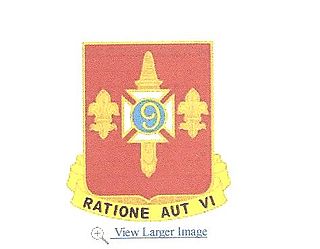
The 244th Air Defense Artillery Regiment is an air defense artillery regiment of the United States Army first formed on June 24, 1799 as the 6th Regiment of Infantry (NYNG).

The 245th Coast Artillery Regiment was a Coast Artillery Corps regiment in the New York National Guard. It garrisoned the Harbor Defenses of New York, New York and predecessor commands 1924–1944.



















